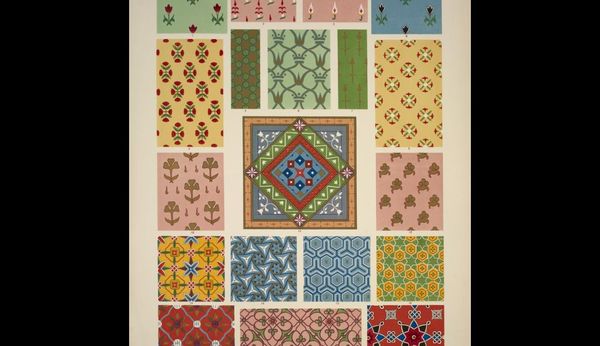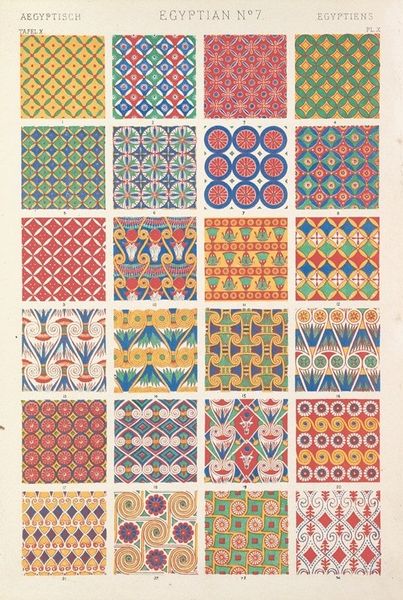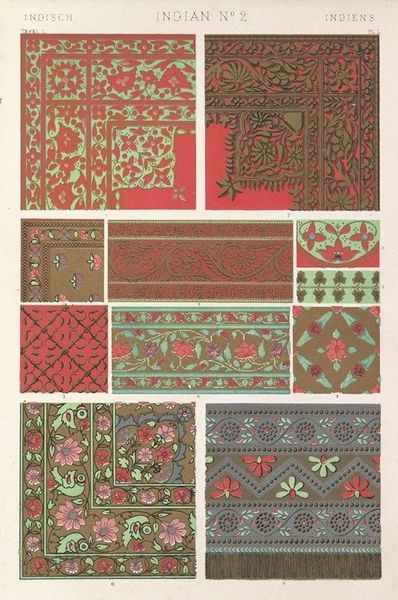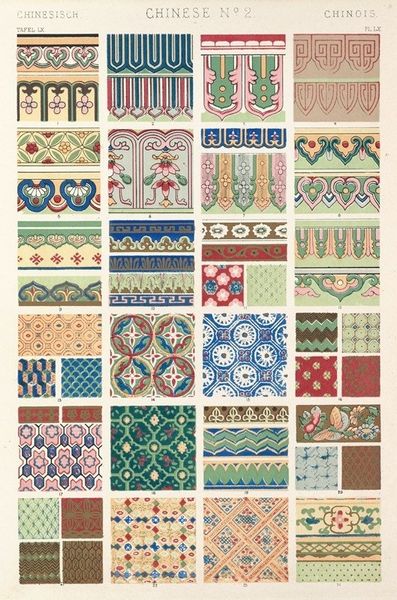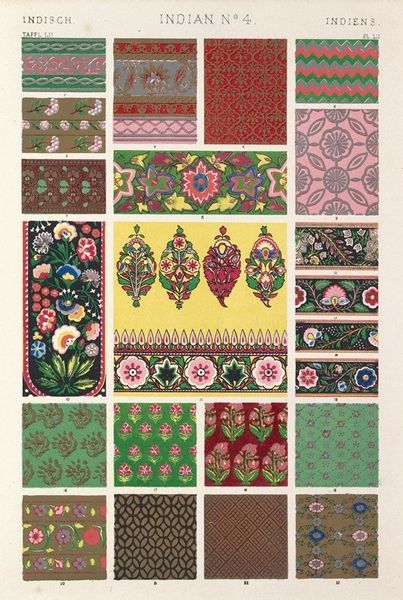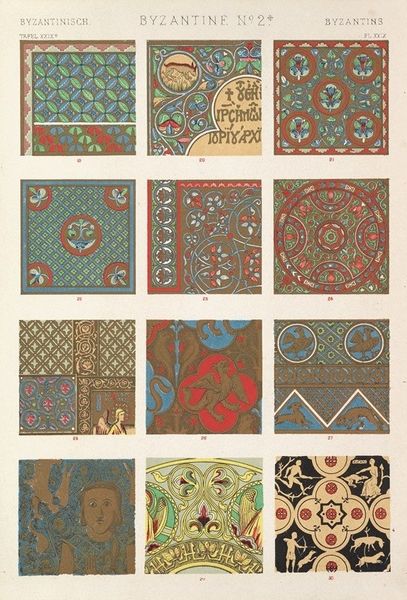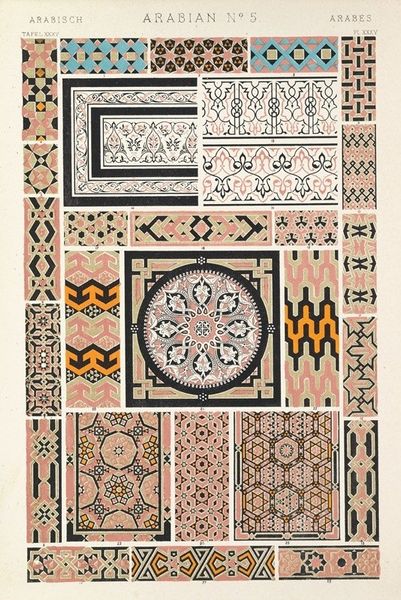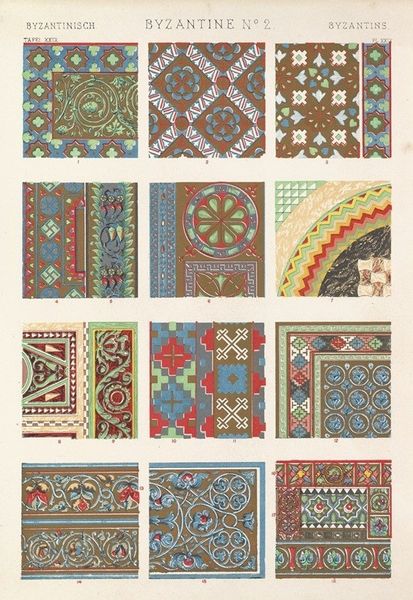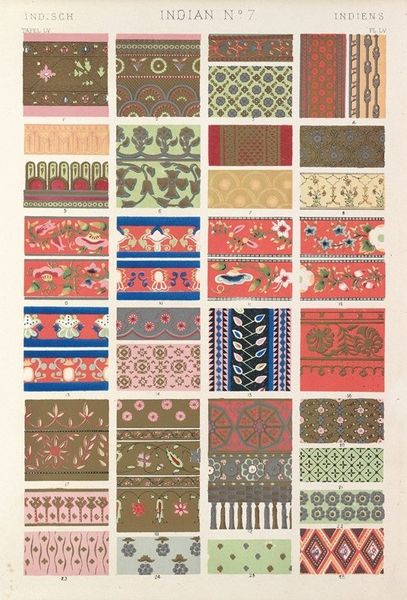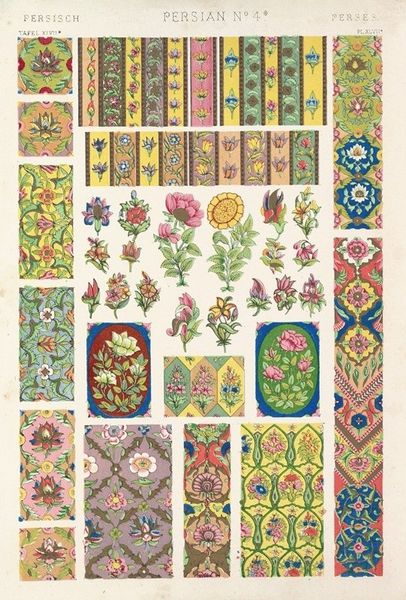
graphic-art, print, paper
#
pattern heavy
#
pattern-and-decoration
#
graphic-art
# print
#
collage layering style
#
fashion and textile design
#
paper
#
pattern design
#
geometric
#
fabric design
#
repetition of pattern
#
pattern repetition
#
islamic-art
#
textile design
#
decorative-art
#
imprinted textile
#
layered pattern
Copyright: Public Domain: Artvee
Editor: This is “Persian No.1”, a print from 1856 by Owen Jones showcasing various patterns, presumably intended for textile or decorative arts. I’m struck by the sheer variety of geometric and floral motifs he’s packed onto a single sheet. What's your read on this visual compendium? Curator: Its charm lies precisely in that structured accumulation. Note the grid; it acts as a frame, highlighting each pattern’s intrinsic qualities. The interplay of color—the reds, blues, greens, and yellows—contributes significantly. Are you drawn to any one in particular? Editor: I find the central square most appealing. The nested geometric forms create incredible depth and the symmetry is soothing. It stands apart from the more botanical-inspired designs around it. Curator: Exactly. Observe how its structure emphasizes a balanced, harmonious relationship of forms and colors, devoid of representational concerns. It's not about depicting something from the world, but about pure visual logic. Do you agree that, divorced from any external reference, the patterns take on lives of their own? Editor: I do! I see how the organization really underscores each pattern's unique structural composition. But it's interesting to consider their potential use in a real-world context – how that might change our understanding of them. Curator: Indeed. Context invariably shifts interpretation, but here, their essence lies within the visual experience. The relationship between the patterns themselves is enough. Editor: I never considered seeing pattern this way before – that an object could rely on the structure and relation of its parts as the ultimate meaning. Thanks for shedding light on that. Curator: A keen eye unlocks fresh perspectives, and pattern, however "simple" it may appear at first glance, is as richly visual as more evidently representational work.
Comments
No comments
Be the first to comment and join the conversation on the ultimate creative platform.
